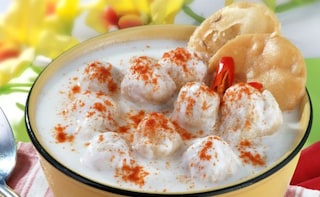Holi is just around the corner. And we can't wait to devour on all things greasy and fried. Gujiyas, kachoris, mathris and namakpare are some staples of Holi we can't imagine the festival without. In this wide list of lip-smacking savoury delicacies, chaat items like dahi bhalla and papdi chaats also find a unique spot. While chaats are a hit throughout the year, it reaches its zenith of popularity during Holi. A typical Holi spread would definitely consist of a chaat item. A dash of yogurt drizzled over papdis and bhallas topped with heart-melting masalas, chutney and pomegranate seeds, a chaat item can turn our worst of days into happy ones and our Holi a tad more colourful.
Dahi Bhalla is an integral part of Holi celebrations.
Advertisement
Chaat is said to have origins in Mughal courts
Advertisement
For the latest food news, health tips and recipes, like us on Facebook or follow us on Twitter and YouTube.
Advertisement
